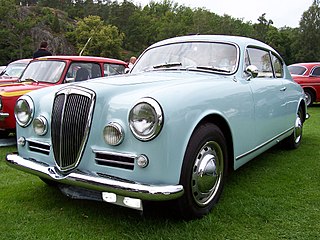
A grand tourer (GT) is a type of car that is designed for high speed and long-distance driving with performance and luxury. The most common format is a front-engine, rear-wheel-drive two-door coupé with either a two-seat or a 2+2 arrangement. Grand tourers are often the coupé derivative of luxury saloons or sedans. Some models, such as the Ferrari 250 GT, Jaguar E-Type, and Aston Martin DB5, are considered classic examples of gran turismo cars.

ASA was an Italian automobile manufacturer active from 1961 to 1969, who is known for manufacturing the ASA 1000 GT. This car was developed by Ferrari engineers in the late 1950s as a less expensive, compact alternative to existing Ferrari GT cars. ASA used inline-four and straight-six engines derived from the "250" 3-litre V12 designed by Gioacchino Colombo. The chassis was developed by Giotto Bizzarrini and was derived from the tubular frame chassis of the 250 GTO.

The Ferrari 250 GTO is a grand tourer produced by Ferrari from 1962 to 1964 for homologation into the FIA's Group 3 Grand Touring Car category. It was powered by Ferrari's Tipo 168/62 Colombo V12 engine. The "250" in its name denotes the displacement in cubic centimeters of each of its cylinders; "GTO" stands for Gran Turismo Omologato, Italian for "Grand Touring Homologated".

Carrozzeria Scaglietti was an Italian automobile design and coachbuilding company active in the 1950s. It was founded by Sergio Scaglietti in 1951 as an automobile repair concern, but was located across the road from Ferrari in Maranello outside Modena, Italy.

The Ferrari 250 is a series of sports cars and grand tourers built by Ferrari from 1952 to 1964. The company's most successful early line, the 250 series includes many variants designed for road use or sports car racing. 250 series cars are characterized by their use of a 3.0 L (2,953 cc) Colombo V12 engine designed by Gioacchino Colombo. The 250 series designation refers to this engine's cylinder displacement of approximately 250 cc. They were replaced by the 275 and 330 series cars.

Piero Drogo was a racing driver and coachbuilder from Italy. He participated in one Formula One Grand Prix, debuting at the 1960 Italian Grand Prix. He moved on to form a carrozzeria in Modena to service the thriving sports car industry there. His Carrozzeria Sports Cars gained some fame later in the decade. He died in a car accident aged 46.

Bizzarrini S.p.A. was an Italian automotive manufacturer. In 1964, the company was founded by former Alfa Romeo, Ferrari and Iso engineer Giotto Bizzarrini. The company built a small number of highly developed and advanced sports and racing automobiles before failing in 1969. In 2020, it was announced that the name had been acquired by Pegasus brands, together with plans to restart production.
The Ferrari P was a series of Italian sports prototype racing cars produced by Ferrari during the 1960s and early 1970s.
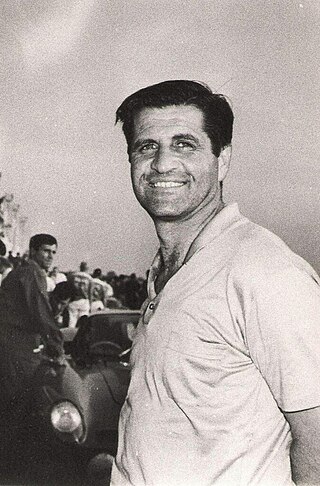
Giotto Bizzarrini was an Italian automobile engineer who was active from the 1950s through the 1970s.

The Ferrari 250 Testa Rossa, or 250 TR, is a racing sports car built by Ferrari from 1957 to 1961. It was introduced at the end of the 1957 racing season in response to rule changes that enforced a maximum engine displacement of 3 litres for the 24 Hours of Le Mans and World Sports Car Championship races. The 250 TR was closely related to earlier Ferrari sports cars, sharing many key components with other 250 models and the 500 TR.

Count Giovanni Volpi di Misurata is an Italian-Algerian nobleman and a former automobile racing manager and Formula One team owner. He inherited a fortune, at the age of 24, from his father, Count Giuseppe Volpi di Misurata, a politician financier and founder of the renowned Venice Film Festival. During World War II, Giovanni Volpi's father served in Benito Mussolini's cabinet as the minister of Finance and one of his chief advisors. He designed several of Mussolini's austerity measures and escaped prosecution after the war. His father also acquired and restored Villa Barbaro at Maser, Italy, built originally for the Barbaro family. Giovanni Volpi is the son of Giuseppe and his second wife, Nathalie El Kanoni.
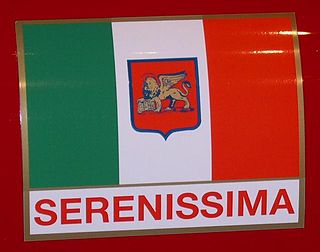
Scuderia Serenissima or Scuderia SSS Republica di Venezia was an auto racing team funded by Giovanni Volpi and active in the early 1960s. The name "Serenissima" refers to one of the many definitions the city of Venice is known for, the Volpi family being originally from the area. Based in Sasso Marconi, close to Bologna, Serenissima mostly competed in Formula One and sports car racing. Originally the team had an engine supply agreement with Ferrari. When Volpi decided to financially support ATS, a Formula One team put together by Carlo Chiti, Giotto Bizzarrini, Romolo Tavoni and other breakaway Ferrari employees, Enzo Ferrari withdrew from the agreement. Serenissima subsequently turned to De Tomaso and Maserati without much success. Serenissima officially closed in 1970.

Carrozzeria Sports Cars was a small carrozzeria in Modena, Italy, which produced sports and racing car bodies from 1960 until 1971. The company was founded by one-time Formula One driver, Piero Drogo along with coachbuilders Lino Marchesini and Celso Cavalieri. As the public face of the company, Drogo's name became synonymous with the cars produced by C.S.C., which are often referred to as "Drogo" bodies or designs. The workshop constructed bodies for many companies, racing teams and individuals including Scuderia Ferrari, Scuderia Serenissima, Iso and Giotto Bizzarrini. Financial difficulties led to the closure of Carrozzeria Sports Cars in 1971.

The 1962 24 Hours of Le Mans was a motor race for Experimental cars and Grand Touring cars, staged at the Circuit de la Sarthe, Le Mans, France on 23 and 24 June 1962. It was the 30th Grand Prix of Endurance and the eighth round of the 1962 International Championship of Manufacturers.

The Ferrari Monza is one of a series of cars built by Ferrari. In the early 1950s, Ferrari shifted from using the compact Gioacchino Colombo-designed V12 engine in its smallest class of sports racers to a line of four-cylinder engines designed by Aurelio Lampredi. Inspired by the success of the light and reliable 2.5 L 553 F1 car, the four-cylinder sports racers competed successfully through the late 1950s, culminating with the famed 500 Mondial and 750 Monza.
Neri and Bonacini, also known as Nembo, was a small carrozzeria and mechanic shop based in Modena, Italy, active from the late 1950s to around 1967. Founded and run by Giorgio Neri and Luciano Bonacini, the shop worked on and produced bodies for Ferrari, Lamborghini and Maserati road and race cars, both in an official capacity for those manufacturers and for private owners. Their best known projects are the Ferrari 250 GT-based Nembo spiders and the Lamborghini 400GT Monza. Neri and Bonacini also designed a car under their own name, the Neri and Bonacini Studio GT Due Litri. Two prototypes of this car were made between 1966 and 1968 but it never entered series production. The shop closed around 1967 when Bonacini went to work for De Tomaso and Neri started his own shop, Motors-World-Machines (MWM).

The Velo Rossa is a fibre reinforced plastic composite automobile body built by Reaction Research in Scottsdale, Arizona, USA. It is designed to re-style the body of the 1970-1978 Datsun/Nissan S30 Z series cars. Front end appearance panels are replaced. Doors and rear external components are over-skinned after trimming out the wheel wells for wider tires.
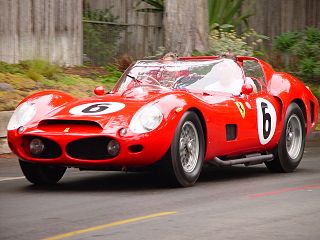
The Ferrari 330 TRI/LM Spyder is a unique racing sports car purpose-built in 1962 by Ferrari to achieve victory at the 24 Hours of Le Mans. It was the last Ferrari racing sports car with a front-mounted engine and the last of a series of Ferrari race cars known as the Testa Rossas. The "I" in its designation indicates that the car has an independent rear suspension.
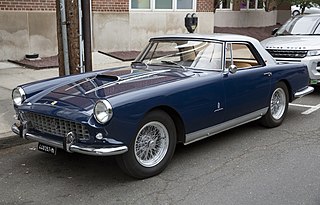
The Ferrari 250 GT Coupé represented a series of road-going, grand touring cars produced by Ferrari between 1954 and 1960. Presented at the 1954 Paris Motor Show, the 250 Europa GT was the first in the GT-lineage. The design by Pinin Farina was seen as a more civilised version of their sporty Berlinetta 250 MM. Series built cars were an answer to the wealthy clientele demands of a sporty and luxurious Ferrari Gran Turismo, that is also easier to use daily.
Thomas Meade was an American automobile designer and dealer best known for his Thomassima series of custom cars based on Ferrari engines and chassis. He was based in Modena, Italy from the early 1960s through the early 1970s, where he met and collaborated with many Modenese carrozzerie, manufacturers and mechanics.


















